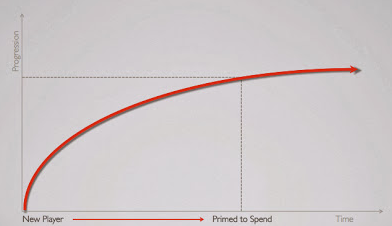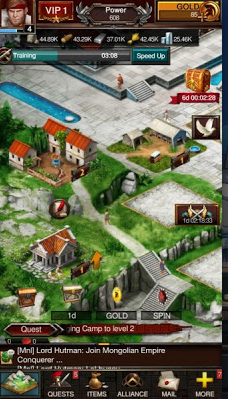In November, we started publishing a series of translations of articles by Mikhail Katkoff, product director at Scopely, about the mechanics of midcore games. Today is the fourth part dedicated to monetization.
I started talking about monetization only in the final part for only one reason.
I consider monetization to be the result of a well-functioning game cycle, strong retention and properly used social elements. So in this material you will not find tricks and hints that reveal its non-existent secrets.
Instead, I’m going to present monetization as a result of the components of successful midcore games already described earlier.
Monetization formula
The monetization formula looks like this:
DAU x Conversion (% of paying players) x ARPPU
As a rule, the industry focuses on the latter two, and also does not forget to mention “whales”, pricing policy, DARPU, the number of paying players and other “tricks” with which developers encourage players to pay more and more.
But I have a different approach. I sincerely believe that in order to achieve the desired financial performance, you just need to forget about all the monetization chips. Instead, you should focus on retention, game economics, and social mechanics.
I also believe that the demand for purchases from players directly depends on the slowing down of game progress (that is, from the moment when certain game tasks begin to require more and more time to complete).

Social mechanics are vital here, because they allow players to compare their progress with other players, which, in turn, spurs some to “catch up” and others to hold the lead.
Monetization bans
But if we talk directly about monetization, then there are two approaches that I advise you to avoid in every possible way. Firstly, the concept of in-game items that can only be purchased for real money. Secondly, sales.
1. Premium stuff
Adding content that is sold only for real money leads to the creation of a pay-to-win game. By adding very powerful items to the game and offering them only to those who are willing to pay real money for them, you discriminate against non-paying players, that is, most of your users.

In Respawnables from Zynga, developers encourage the purchase of premium items. Such content destroys any need for progress, and also breaks the game cycle.
If there is absolutely no way to get these items in any other way, paying players can be considered cheaters to some extent if their number of wins is greater than that of non-paying ones.
And who wants to play against cheaters? Also, who wants to win if everyone around knows that he won only because he paid?
From the editorial office:There is one small “but”.
The fact is that, for example, Chinese users really like to show off the things they bought. For them, the demonstration of an expensive purchase is an opportunity to show their high status. Unique items are something like showing off the latest version of the iPhone to people who are struggling to earn a piece of bread.
If we are not mistaken, pay-to-win monetization is also common in Russian online role-playing games. With a sharp change in the monetization model, this leads to a conflict between developers and the gaming community, but if such an approach was introduced into the project from the very beginning, it is taken for granted.
2. Sales
The problem with the constant sales of in-game items is that they significantly change the habits of paying players. Of course, you will get such pleasant peaks of sales during their conduct. However, after the sale, the indicators fall much below the level at which they were before them. In other words, you will train your users to buy in-game items only during sales. Players will continue to avoid spending money on items not during promotions.
Product managers who are very fond of launching sales tend to emphasize that they are selling virtual items (at least, I myself often said this a couple of years ago), which are an endless resource. But virtual resources have value, and this value is progress. Sales allow engaged users to develop faster and, as a result, increase the demand for content that is finite.

Game of Wars from Machine Zone is notorious for its obsessive sales. They run so many sales that I’m not sure if it’s possible to buy anything in the game without a discount.From the editorial office:
Constant discounts in Game of Wars do not prevent the game from shining in the top ten at the leading iOS markets.

Don’t get me wrong. I’m not in favor of not holding sales at all, but personally I like only two types of them.
First of all, I like sales aimed at users who have not yet converted. That is, you incite the user to pay for the first time, and as soon as they make their first purchase, you stop offering them discounts.
The second type is seasonal discounts (Christmas, Easter and so on). Such discounts do not affect the behavior of users, since their seasonality emphasizes their uniqueness.
Think of monetization as a process (and a consequence)
As I have already mentioned a couple of times above, sustainable monetization is the result achieved with the help of a perfectly implemented game design, a balanced game economy, involving social mechanics in the gameplay.
Personally, I like to look at monetization as a process.
It all starts with the fact that the user starts playing if he gets the feeling that this is a cool new game, a game that he has not played yet.
After the developers give birth to such a feeling in the player, and he returns to the project, it’s time to make sure that he likes everything. Gradually show him all the interesting features that improve the impression and, most importantly, create a demand for progress.
When players want to progress, it’s time to turn on the social mechanics. Make sure that the players can mutually interact with each other. Also make sure that the interaction takes place in a space open to everyone.
And when the players say “wow” – it’s time to earn.
So, when your players enjoy the games and want to develop in it, when they work with each other and demonstrate progress to each other… then you have a successful midcore game on your hands.
Other articles in the series:
1. Game cycles

2. User retention

3. Social mechanics

A source: http://www.deconstructoroffun.com/
